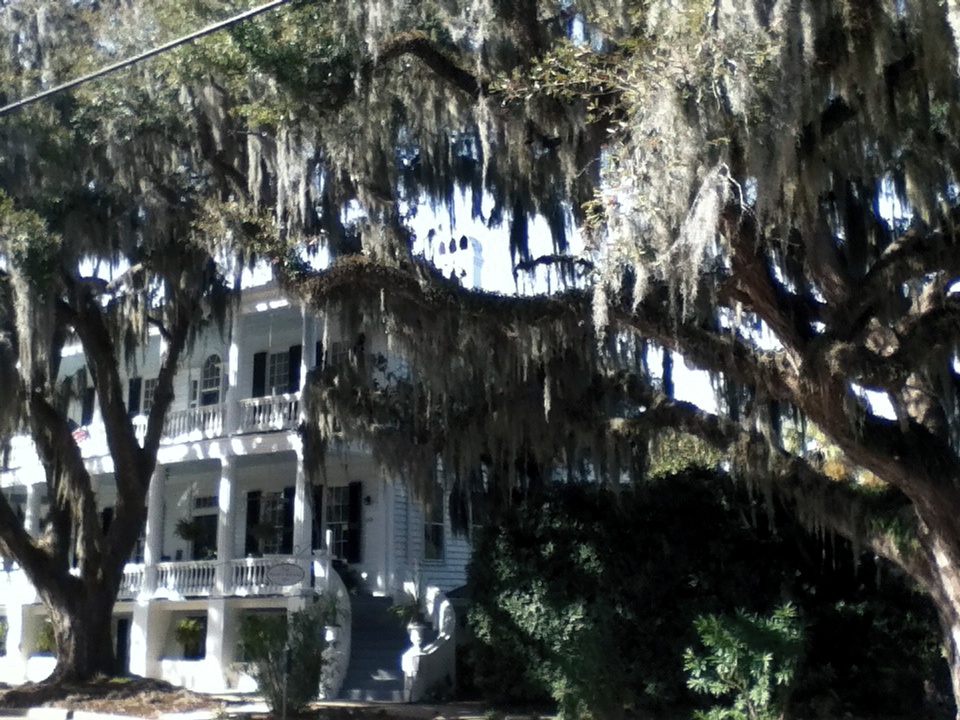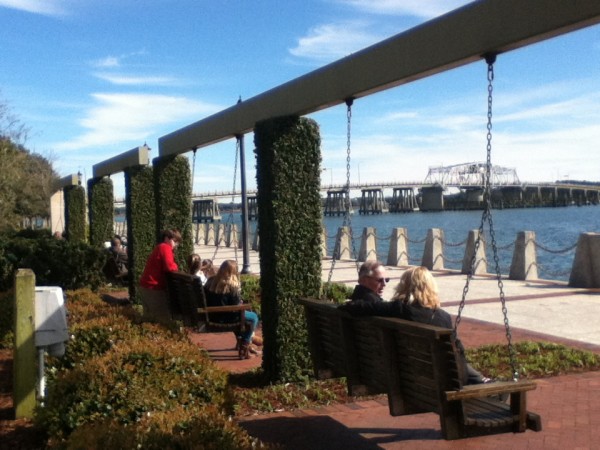Along the “Lowcountry” a stretch of sea islands and coastline is deeply effected by the sweeping tides. Our RV is bouncing along, winding up the coastal waterways, following the lazy yet pristine water along miles of undisturbed marshes and acres of natural woodlands. This area is teeming with wildlife, and larger trees, commonly Live Oak and Bald Cypress with their Spanish Moss, long graybeards dangling low. There, a lovely picturesque town of Beaufort (it’s pronounced BE-YOU-FERT) sits alongside the Beaufort River. Charted in 1711, it is the second-oldest city in South Carolina, behind Charleston. Also, it is one of the few cities with its entire downtown designated by the National Trust for Historic Preservation as a historic district. No wonder several major motion pictures, including Forrest Gump, The Prince of Tides, The Big Chill, Forces of Nature, and the Great Santini, just to name a few, were all made here.
We enjoyed walking all over the oak and moss lined streets and especially the charming Henry C. Chambers Waterfront Park. From one of the numerous large bench-sized swings there, overlooking the Beaufort River, we went swinging wildly like children all over again ~ whee!

From Beaufort, about 20 miles southeast along the Sea Island Parkway, we discovered an amazing gem, the Hunting Island State Park and its 1859 Lighthouse. We scored a beachfront campsite about 30 feet from the breaking waves and soothing ocean roars for two wonderful nights. This was fortunate, as it is the most popular state park in South Carolina, even during the the lowest attendance month of the year. On the first night under a brilliant half-moon with its piercing Jupiter, I went out on the beach and noticed that the lighthouse in the near distance was actually rotating its light toward the ocean ~ what a treat! Before sunrise, I took a quick walk down the beach toward the lighthouse and noticed a veritable graveyard of trees lying unburied on the wide expansive beach. This island suffers major beach erosion yearly, ranging from 7 to 15 feet of land lost yearly to the sea. Since 2000, 50 to 250 feet of land lost means houses, roads, campsites and forests have been washed away. A 16-year annual camper at this park, pointed out that her favorite site likely would be the next one lost to the ocean, along with the road providing access to our site….thus the large tree graveyard there. They used to bring in sand and rock to provide erosion relief, but now allow nature to have her way, as we know she will in the end.



Hi,
I too love the low country. Edisto Island has been a favorite vacation spot for years. In fact my daughter Robynn and family will be there mid March.
Great photo Steven. Frame it!
Love
Diane